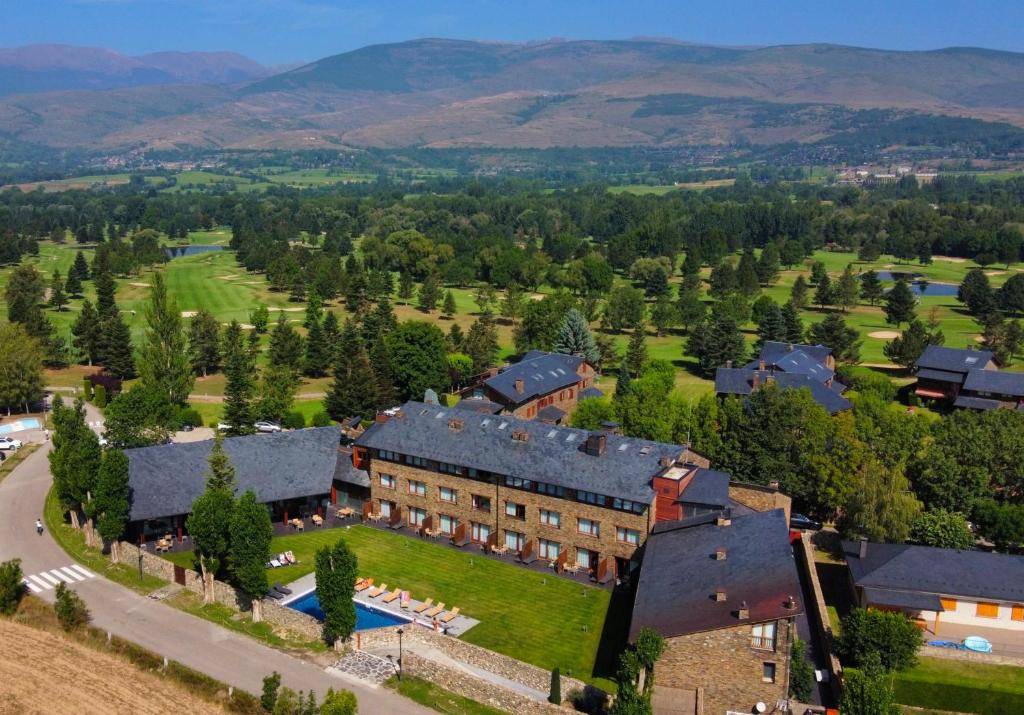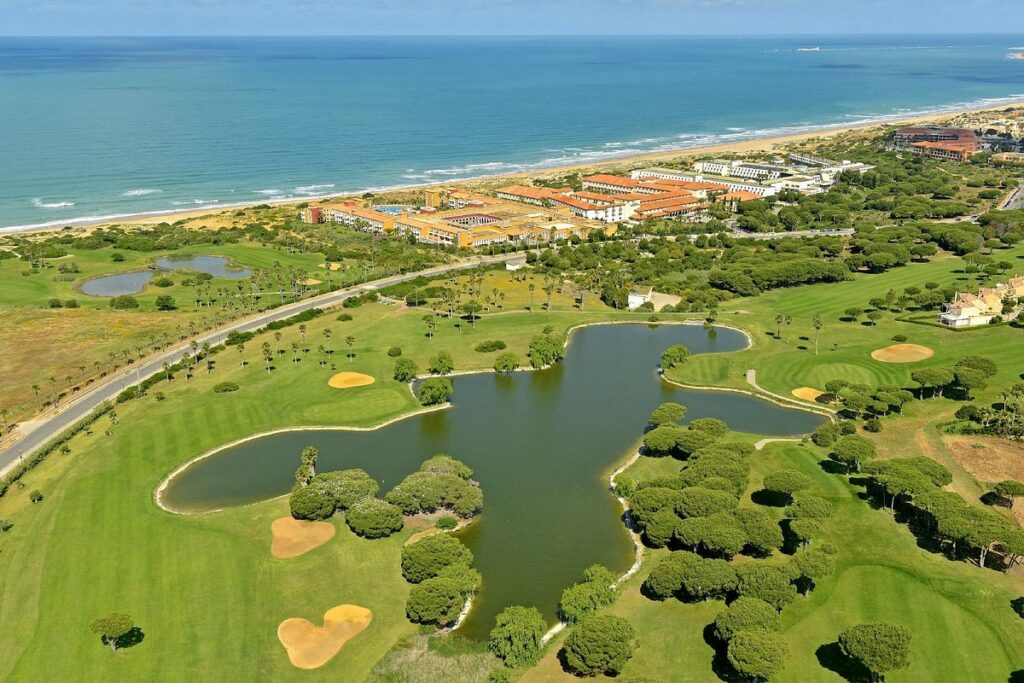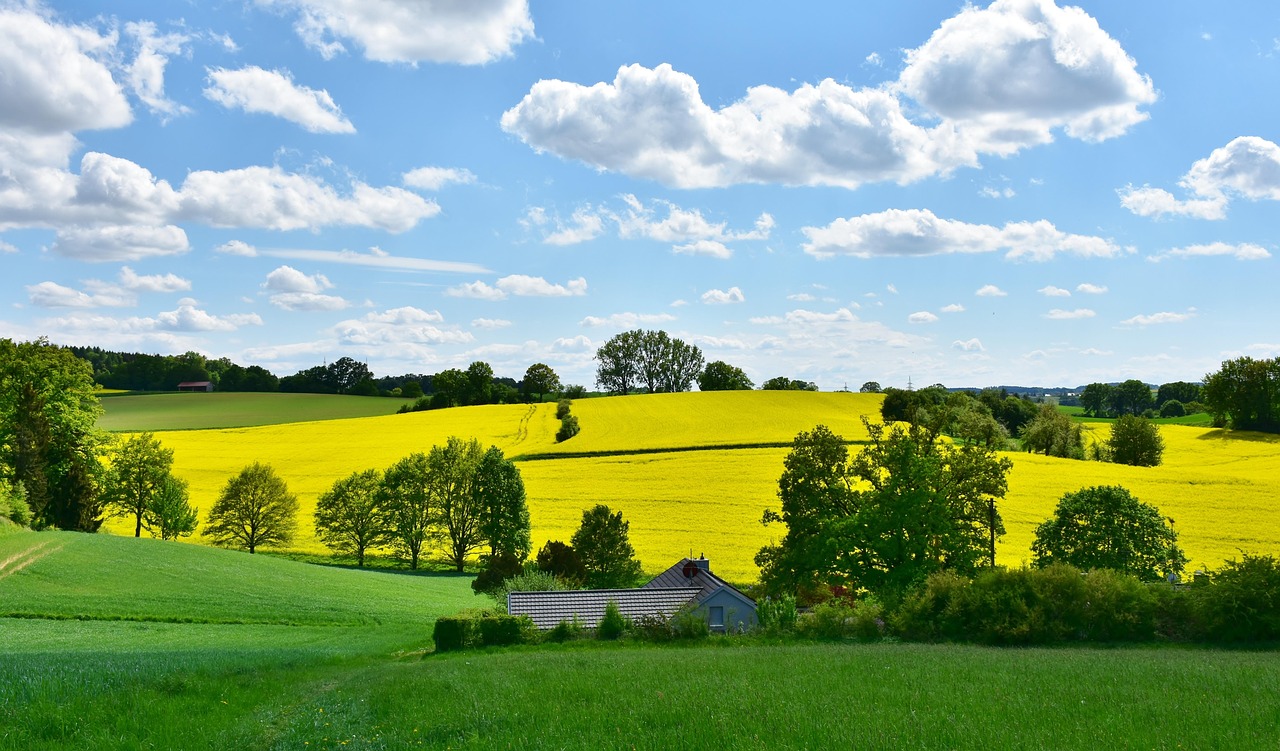Blog
7 Hot Vacation Stops To Watch The HotelPlanner Tour
Plan your golf holidays at these glorious locations!

The 2025 HotelPlanner Tour schedule continues in South Africa this week, with the Cell C Cape Town Open in association with Honor taking place at the Royal Cape Golf Club in Cape Town from February 6-9.
Players will compete for a record total prize fund of over €9,000,000 on the HotelPlanner Tour this season, with each European event having a minimum prize fund of €300,000.
The prize fund increases for 16 events in total in 2025.
The schedule will consist of 29 tournaments staged across three continents in 18 different countries.
The All New HotelPlanner Tour
The 2025 HotelPlanner Tour, formerly known as the Challenge Tour, offers an exciting array of tournaments set in some of the world’s most captivating destinations. Golf enthusiasts and travelers alike can look forward to experiencing top-tier golf while exploring diverse cultures and landscapes.
Here are some of the standout destinations on this year’s schedule:
1. Kolkata, India – Kolkata Challenge (March 13-16, 2025)

Venue: Royal Calcutta Golf Club, Kolkata, West Bengal, India
Why Visit: As one of the oldest golf clubs outside of Britain, Royal Calcutta Golf Club is steeped in history. Kolkata is a vibrant city known for its colonial architecture, delicious street food, and cultural festivals. Visitors can explore landmarks like the Victoria Memorial and Howrah Bridge while soaking in the city’s unique charm.
Click here for flight, hotel, and car deals near this tournament
2. Abu Dhabi, UAE – Abu Dhabi Challenge (April 17-20, 2025)

Venue: Al Ain Equestrian, Shooting & Golf Club, Abu Dhabi, UAE
Why Visit: Abu Dhabi is a dazzling metropolis known for its luxurious lifestyle and cultural heritage. While in town, visitors can explore the Sheikh Zayed Grand Mosque, experience thrilling desert safaris, and relax on pristine beaches. The Al Ain Equestrian, Shooting & Golf Club provides a fantastic setting for both seasoned golfers and casual fans.
Click here for flight, hotel, and car deals near this tournament
3. Girona, Spain – Challenge de España (May 8-11, 2025)

Venue: Fontanals Golf Club, Girona, Spain
Why Visit: Girona is a picturesque Catalonian city known for its medieval architecture, vibrant food scene, and stunning coastal proximity. Golfers will love the challenging course at Fontanals Golf Club, while visitors can stroll through the charming old town, visit the iconic Girona Cathedral, or enjoy local tapas.
Click here for flight, hotel, and car deals near the tournament
4. Lucerne, Switzerland – Swiss Challenge (June 5-8, 2025)

Venue: Golf Sempachersee, Lucerne, Switzerland
Why Visit: Nestled amidst breathtaking Alpine scenery, Lucerne offers a perfect mix of nature and culture. Beyond the golf course, visitors can take a scenic cruise on Lake Lucerne, ride the world’s steepest cogwheel railway up Mount Pilatus, or explore the charming old town with its iconic Kapellbrücke (Chapel Bridge).
Click here for flight, hotel, and car deals near the tournament
5. Cadiz, Spain – Challenge de Cadiz (May 29 – June 1, 2025)

Venue: Iberostar Real Golf Novo Sancti Petri, Cadiz, Andalucía, Spain
Why Visit: Located in the heart of Andalucía, Cadiz is a sun-soaked paradise with stunning beaches, rich history, and fantastic seafood. The Iberostar Real Golf Novo Sancti Petri course is a delight for golf lovers, while the region offers countless attractions, including the historic old town, flamenco shows, and world-famous sherry wines.
Click here for flight, hotel, and car deals near the tournament
6. Scotland – Farmfoods Scottish Challenge (July 31 – August 3, 2025)

Venue: SCHLOSS Roxburghe, Heiton by Kelso, Scotland
Why Visit: Scotland is the birthplace of golf, and playing at SCHLOSS Roxburghe offers an authentic experience in one of the sport’s most iconic countries. Beyond the greens, visitors can explore Edinburgh’s historic sites, tour whisky distilleries, and take in the rugged beauty of the Scottish Highlands.
Click here for flight, hotel, and car deals near the tournament
7. Portugal – Open de Portugal (September 11-14, 2025)

Venue: Royal Óbidos Spa & Golf Resort, Vau Óbidos, Portugal
Why Visit: Portugal is renowned for its stunning coastline, historic towns, and exceptional golf courses. Royal Óbidos offers breathtaking ocean views and challenging play. While in the region, visitors can explore the medieval town of Óbidos, enjoy fresh seafood, or relax on the beautiful beaches of the Silver Coast.
Click here for flight, hotel, and car deals near the tournament
Plan Your Ultimate Golf Trip
From the bustling streets of Kolkata to the scenic landscapes of Switzerland, the 2025 HotelPlanner Tour promises incredible golfing experiences in some of the world’s most captivating locations. Whether you’re a dedicated golfer or just love to travel, these destinations offer the perfect mix of sport, culture, and adventure.
Which of these stunning golf locations would you love to visit? Let us know in the comments below!
For the complete 2025 tour schedule, visit the official website
Blog
Unveiling the History and Symbolism of Iconic Golf Trophies
Golf is a sport steeped in tradition, prestige, and class. From the lush greens of the course to the meticulously designed clubs, each aspect of the game exudes a sense of history and elegance.

Golf is a sport steeped in tradition, prestige, and class. From the lush greens of the course to the meticulously designed clubs, each aspect of the game exudes a sense of history and elegance. Among these elements, golf trophies – the coveted prizes of the tournament – hold a special place. These iconic awards not only represent the winning golfer’s skill and determination but also carry a rich history and meaningful symbolism. In this article, we’ll delve into the story behind some of the most iconic golf trophies and what they symbolize, offering a unique perspective on this beloved sport.
The Claret Jug: The Open Championship
The Claret Jug, officially known as The Golf Champion Trophy, is awarded to the winner of The Open Championship, one of the four major championships in professional golf. The trophy, first presented in 1873, replaced the original prize of a red leather belt with silver buckle.
Its design is based on the medieval ‘claret jugs’ used to serve wine. The symbolism here lies in the association of the jug with a time-honored tradition, reflecting the essence of the tournament itself. The names of all the previous winners are inscribed on the jug, creating a tangible link to the history of the sport.
The Green Jacket: The Masters Tournament
At The Masters Tournament, one of the most prestigious events in golf, the winner is honored with a distinctive green jacket. The tradition began in 1937 when members of the Augusta National Golf Club wore green jackets to distinguish themselves from the crowd.
The symbolism of the Green Jacket is twofold. Firstly, it represents membership of an exclusive club, as only winners of The Masters or members of the Augusta National Golf Club are entitled to wear it. Secondly, the green color reflects the lush, pristine condition of the golf course, a crucial aspect of the sport.
The Wanamaker Trophy: PGA Championship
The Wanamaker Trophy, awarded to the winner of the PGA Championship, is named after Rodman Wanamaker, who played a significant role in establishing the Professional Golfers’ Association of America. It’s one of the largest trophies in professional golf, standing nearly 2.5 feet tall and weighing 27 pounds.
The size and weight of the Wanamaker Trophy symbolize the magnitude and prestige of the tournament it represents. Moreover, engraved on its silver surface are the names of past champions, honoring the legacy of the game.
The U.S. Open Trophy
The U.S. Open Trophy, awarded to the winner of the U.S. Open, dates back to 1895. The trophy was destroyed in a fire in 1946 and had to be recreated from photographs of the original.
The trophy is a sterling silver cup, adorned with elaborate ornamentation. The names of previous winners are engraved on the base, acknowledging the tournament’s rich history. The trophy represents the pinnacle of achievement in American golf, symbolizing the grit and determination required to prevail in one of the sport’s most challenging competitions.
Golf trophies are more than just symbols of individual triumph; they are embodiments of the rich history, tradition, and enduring spirit of the game. From the Claret Jug’s reflection of time-honored tradition to the Green Jacket’s symbolization of exclusivity and pristine golfing conditions, each trophy carries a unique story and meaning. These iconic awards, while coveted for their prestige, also serve as a timeless reminder of the sport’s enduring allure and the unforgettable moments that define golf history.
Blog
The Most Dramatic Final-Day Finishes in Major Sports Tournaments
Many sports have some nail bitting finishes. Robert Greenfield recaps some major final day finishes in sports history.

The final day of major sports tournaments often delivers an exhilarating end to the competition that keeps fans on the edge of their seats. There’s no better testament to the suspense and drama of sports than those last-minute turnarounds, nail-biting finishes, and underdog triumphs that define the beauty of competition. This article will take you on a thrilling journey through some of the most dramatic final-day finishes in major sports tournaments, reminding us all why we love sports in the first place.
-
- The Miracle of Istanbul – 2005 UEFA Champions League Final
The 2005 UEFA Champions League Final between Liverpool and AC Milan is etched in the annals of football history as one of the most dramatic comebacks ever witnessed. AC Milan, boasting a star-studded lineup, went into halftime with a seemingly unassailable 3-0 lead. However, Liverpool had other plans. In a six-minute spell after halftime, the Reds staged an incredible comeback to level the match at 3-3, eventually winning the game on penalties. The victory was a testament to the never-say-die spirit of Liverpool and the unpredictability of football.
-
- The “Shot Heard ‘Round the World” – 1951 National League Pennant Playoff
In baseball’s history, few moments match the drama of the 1951 National League Pennant Playoff. The New York Giants and the Brooklyn Dodgers were facing off in a three-game playoff to determine the National League champion. In the bottom of the ninth inning of the decisive third game, with the Giants trailing 4-2, Bobby Thomson hit a game-winning three-run homer off Dodgers pitcher Ralph Branca. This legendary moment, known as the “Shot Heard ‘Round the World,” is one of the most iconic in baseball history.
-
- The 1999 Ryder Cup “Battle of Brookline”
The 33rd Ryder Cup, held at The Country Club in Brookline, Massachusetts, saw one of the greatest comebacks in the history of golf. The United States trailed Europe 10-6 heading into the final day, but in a stunning display of determination and skill, the American team clawed back to win 14.5-13.5. The victory, known as the “Battle of Brookline,” is still celebrated as a pivotal moment in golf history.
-
- The 1980 “Miracle on Ice”
One of the most dramatic moments in the history of ice hockey came during the 1980 Winter Olympics. The heavily favored Soviet Union team was expected to sweep the gold, but the underdog United States team had different plans. In a game filled with tension and drama, the U.S. team defeated the Soviets 4-3 in a match now known as the “Miracle on Ice.” This victory is not only iconic in the sport of ice hockey but also a significant moment in American sports history.
- The 2019 Cricket World Cup Final
The final of the 2019 Cricket World Cup between England and New Zealand was filled with unprecedented drama and suspense. Both teams ended their innings tied on 241 runs, leading to a Super Over – cricket’s version of a tiebreaker. Incredibly, the Super Over also ended in a tie, with both teams scoring 15 runs. England was ultimately declared the winner on the basis of a boundary countback rule, marking their first-ever World Cup victory.
Conclusion
The unpredictability, suspense, and drama are what make sports so captivating. These dramatic final-day finishes remind us of the thrilling highs and lows that come with the world of competitive sports. As fans, we live for these moments, cherishing the unexpected triumphs and heartbreaking defeats. The next time you find yourself watching the final day of a major sports tournament, remember these historic moments and brace yourself for the potential drama that could unfold.
Blog
Weather and the Game: The Undeniable Influence of Elements on Championship Outcomes
Learn how weather affects different championship outcomes.

Introduction
As a sports enthusiast, you might have noticed that weather plays a significant role in sporting events, particularly in championships. From the power of a baseball pitch to the course of a golf ball, from the strength of a football kick to the stride of a marathon runner – the elements can influence each of these and more. In this article, we delve into the fascinating intersection of meteorology and sports, examining how weather conditions can make or break a championship game.
The Impact of Weather on Different Sports
Whether it’s football, baseball, golf, tennis, or marathon, each sport faces unique challenges when it comes to weather. Let’s delve into the specifics:
Football and Weather Elements
Football is a sport that’s played in almost all weather conditions except for severe ones like lightning storms. However, weather elements have a significant impact on the game.
-
- Rain: A wet field makes the ball slippery, impacting players’ ability to handle, pass, or kick the ball accurately. Rain can also make the field muddy, affecting the players’ ability to move swiftly.
- Wind: Strong wind can alter the trajectory of the ball, affecting passes and kicks.
- Cold: Extremely cold temperatures can affect players’ physical performance and endurance, while also making the ball harder and more challenging to catch.
Baseball and Weather Elements
Baseball is another sport where weather conditions can significantly influence the outcome.
-
- Wind: The direction and speed of the wind can affect the trajectory and distance a baseball travels.
- Humidity: High humidity can make the ball denser, potentially reducing its bounce and speed.
- Temperature: Low temperatures can make the ball harder, affecting its bounce and the players’ ability to grip and hit it effectively.
Golf, Tennis, and Marathons
Weather conditions play an equally crucial role in golf, tennis, and marathons.
-
- Wind: In golf, the wind can alter the ball’s direction and distance. In tennis, wind can affect ball control, altering serves and volleys.
- Temperature: Extreme heat can affect a marathon runner’s performance significantly, leading to dehydration and exhaustion.
- Rain: In golf, a wet course can slow down the ball, while in tennis, a wet court can make the ball bounce irregularly.
Case Studies: Weather Influencing Championship Outcomes
This section presents some examples of games where weather conditions significantly influenced the outcome.
- The “Ice Bowl” (1967): The NFL Championship game between the Green Bay Packers and the Dallas Cowboys, often referred to as the “Ice Bowl,” witnessed one of the coldest conditions in NFL history, affecting players’ performance and the final outcome.
- The “Windy City” World Series (1945): The World Series game between the Chicago Cubs and Detroit Tigers was so affected by the wind that it changed the trajectory of the baseball multiple times, influencing the game’s final score.
- Wimbledon Championships (2019): The final match between Novak Djokovic and Roger Federer was played with the Centre Court’s roof closed due to rain, limiting the natural elements’ effects and perhaps altering the match’s dynamics.
Conclusion
The impact of weather on sports is an exciting field of study, revealing how the natural elements influence games and championships. From altering the trajectory of a ball to affecting a player’s physical performance, weather can indeed be a game-changer. As fans and enthusiasts, understanding these influences can add another layer of excitement and anticipation to our favorite sports.
So the next time you attend or watch a game, remember to check the weather forecast. It might just give you a sneak peek into the game’s possible outcome!
-

 Product Review6 years ago
Product Review6 years agoThe Perfect Practice Putting Mat Review by Jason Tenzer
-

 Blog4 years ago
Blog4 years agoLoophole Rule Offers PGA Tour Pros a Mulligan
-

 Blog4 years ago
Blog4 years ago2021 Buyer’s Guide: The Top 10 Value Golf Balls For Distance & Feel
-

 Blog5 years ago
Blog5 years agoGolf Marriage Counselor
-

 Blog6 years ago
Blog6 years ago9 Biggest Chokes Of The Past Decade
-

 Product Review6 years ago
Product Review6 years agoTHE ADJUSTABLE IRONS: WALKING STICKS GOLF CLUBS
-

 Blog4 years ago
Blog4 years agoWhat Your Golf Clubs Say About You
-

 Equipment6 years ago
Equipment6 years agoOHK Sports Interview by Jason Tenzer






























